This is the first guest post by our Instructor Kiri. She will be blogging here on a new series called ‘Women in Diving’ which will cover various topics from how to make a career as a female diving instructor to everyday tips and tricks like how to take care of your hair.
Our Top 5 Hair Care Tips for Divers
Alright ladies, let’s talk about one of the biggest problems we all have in diving. What to do with our hair?
I once witnessed a poor girl getting her complete ponytail entangled around the first stage of her regulator and it took three members of staff and a lot of patience to free her again. So what to do to prevent those terrible knots or that dreaded moment it becomes completely tangled in your equipment…
The lovely ladies at Master Divers experimented with a few different methods of how to take care of our luscious locks and I will present you with their favourites which actually will stand up to a busy day’s diving!
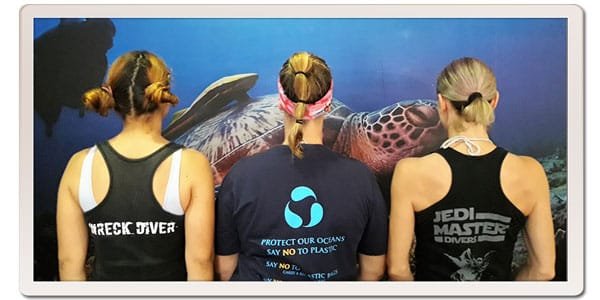
Coconut Oil
Advantages: Coconut oil was a firm favourite amongst the group since it stopped any type of hair from knotting and turning into dreadlocks and as a bonus it is also super eco-friendly. It will be effortless to brush through your hair; even after a full day in the ocean. We recommend putting it on before the first dive to prevent salt damage, and if you forget to rinse your hair immediately after the dive (or just don’t have the time to) it will be easy enough to untangle everything later on.
Disadvantages: The main downside was that coconut oil left our hair just looking greasy all the time. It’s also not the cheapest option when used on a daily basis.
Best for: Taking care of your hair from the roots to the tips and preventing knots, tangles and other damage.
Our score: 4.5/5
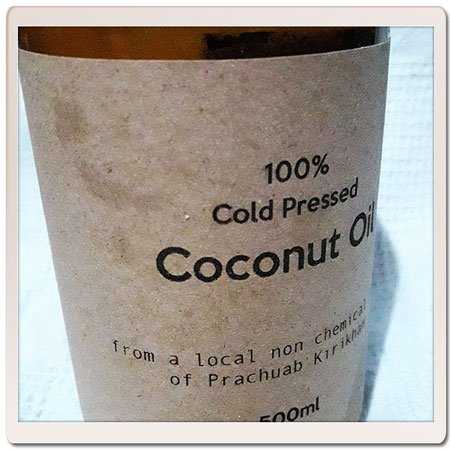
Braids
Advantages: Whether you’re just doing a standard plait or going all out with fancy French or mermaid braids, these styles were great at keeping our hair out of the face and out of the equipment – which makes braids a very practical option for us all! We recommend additionally using an oil or conditioner to help protecting your hair from the saltwater.
Disadvantages: For those with thin hair a massive downside of this style was knotting! Even with a bit of oil added, the hair just turned into one big matted mess! Also, if you’re the only girl in the group who knows how to do nice braids, prepare to become the designated hairdresser for the entire day!
Best for: An advanced solution for keeping both, long and short hair, out of the way.
Our score: 4/5
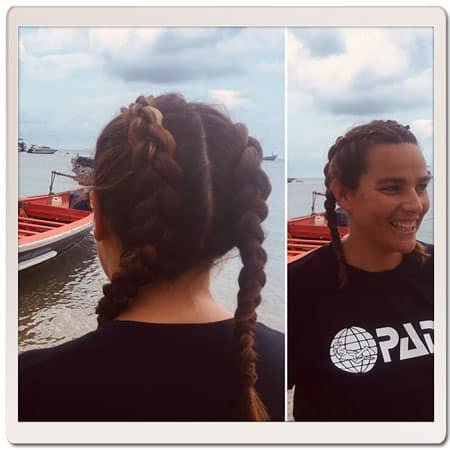
Ponytails and buns
Advantages: While there were a few different opinions on low ponytails vs. high buns, we all agreed that the most important thing was keeping our hair tightly together and away from the first stage of the regulator. Again, we recommend to combine your preferred style with coconut oil for the best results. If you have very long hair you might want to try to add extra hair bands down the length of your ponytail to keep it all secured together.
Disadvantages: Occasionally we did get a hair band stuck in our hair! Trust me, this is a rather painful experience! This problem can be minimised by using coconut oil or smooth rubber hair bands which are specifically made for use in water. Another problem was getting the mask strap in the correct place on the back of the head, without it pulling on our hair or slipping down too low.
Best for: A quick solution for keeping your hair secure and away from the equipment
Our score: 3/5
Headbands and buffs
Advantages: Headbands and buffs were amazing at keeping all of those straggly little baby hairs tidy and tucked away. Hidden under one of these, no hair got entangled in snorkel clips or trapped under the mask skirt (which might cause the mask to leak). Any standard headband will do the trick, but we recommend the wider buffs, as they make it easier to ensure all those straggly bits are covered. Bonus: they work with any length of hair!
Disadvantages: A major drawback of this solution was that if we were doing a skills session and practiced mask removal, the headband was coming off, too. So especially if you are looking for a way to tame your hair during your PADI Open Water Diver course, this is not the most practical solution for you. However, if you are a regular fun diver, these buffs are a great investment and not overly pricey.
Best for: Fun divers for protecting your fringe and baby hairs
Our score: 3.5/5
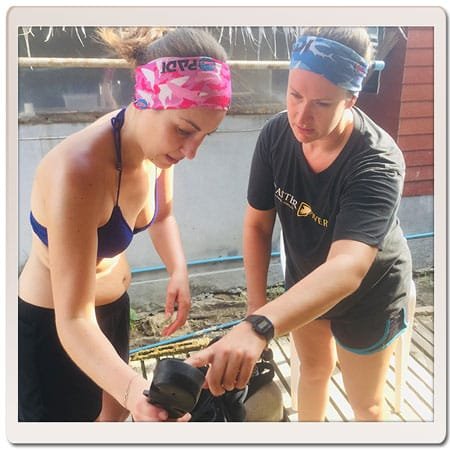
Neoprene mask straps
Advantages: We all loved using neoprene mask straps! No matter how we were wearing our hair it made removing and replacing the mask so much more comfortable, without the feeling of the silicone straps pulling on our hair. Bonus: they come in pretty much any design you want and you can even customize your own online, which is perfect for personalizing your equipment.
Disadvantages: We couldn’t find many points against using neoprene mask straps. Neoprene mask straps generally come in too different styles and we preferred the one that slides over rather than the one that is adjustable with velcro (which could stick to your hair as well).
Best for: Boys and girls with long hair to reduce pulling and snagging of the mask strap on your hair.
Our score: 5/5
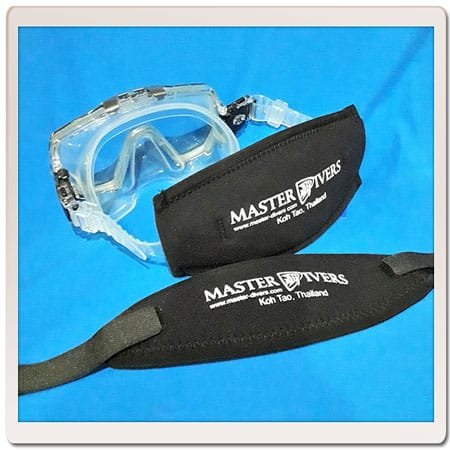
Summary
Different things worked for different hair types: long, short, thick, thin – it is important to know your hair type and what you need to protect it from to find the most suitable style for you. What we can all agree on though is that neoprene mask straps make a huge difference for us all and none of us will ever go back to diving without one! It is important to wash (or at the very least rinse) your hair as soon as possible. The longer the salt stays in the more damage it’s going to cause.
Let us know which one helped you or if you have tested any other methods that we need to know about!
